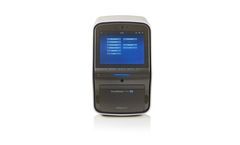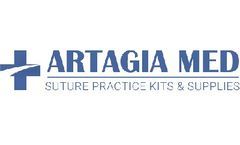Forceps Articles & Analysis
13 articles found
Contains quality equipment such as Littauer scissors, 1-Plastic forceps, 1-Gauze pads, 3 x ...
Since the 19th century, the practice of tissue processing has remained largely unchanged, resulting in solidified, paraffin-embedded tissue blocks for sectioning. As staining procedures have advanced and immunohistochemistry is becoming more widely used, high-quality tissue sections are paramount for accurate interpretation of disease ...
Hypothesis / aims of study: To evaluate a new service experience & the rate of Obstetric Anal Sphincter Injuries (OASIS) with the use of Episcissors at instrumental deliveries. ...
Delamination Delamination should be performed once the slowest area has integrated and involves the following steps: Remove all staples and/or sutures. Using forceps, raise a free edge of the sealing membrane. Peel the membrane off the matrix using gentle, even traction. ...
Every suture practice kit should come with a pair of Adson forceps. You use the instrument to hold the skin closed around the wound during suturing. Also called clamps, the forceps are ratcheted to securely hold dense tissue. Hold the forceps between your thumb and index finger. ...
Needle Holders Needle holders are also referred to as needle drivers or needle forceps. Their tip is texture to enable a tight grip. They also come with a ratchet to allow locking. ...
With a Suture Kit A suture kit can work wonders in improving hand positioning, forceps finger placement and action, among others. It’s reusable, and a good one has everything you need to close nearly all types of wounds. ...
In suturing a wound you'll probably need around five to six tools, namely a Hegar needle holder, an Adson forceps, suture scissors and surgical blades. You won't have to waste money trying to piece together a suture practice kit, as there are complete ones in the market. ...
The robot arms move above the patient’s stomach as if guided by an invisible hand. Monitors on each side of the operating table show an oversized, 3-D image of the stomach’s interior. Two meters (about six feet) away, Dr. Markus Mille sits fully absorbed at the control ...
” This can also include catheters, tools, guidewires, sutures, forceps and more. Given the proximity these items would have with the human body, it’s reassuring to know toxicity has been tested and proven not to be a factor. ...
Regarding the choice of instrument for AVD, this is dependent on a balance of clinical circumstance and practitioner experience.12 A Cochrane review has included evidence from 10 trials evaluating the relative merits of vacuum versus forceps delivery.28 Overall, vacuum delivery appears to be associated with reduced maternal trauma compared with forceps, whilst ...
The Royal College of Obstetricians and Gynaecologists has listed the following risk factors for OASIS in its guideline for the management of third and fourth degree tears: Asian ethnicity, nulliparity, birth weight greater than 4 kg, shoulder dystocia, occipito-posterior position, prolonged second stage of labor, and instrumental delivery in which forceps carries a higher risk ...
Fill the needle receptacle with cleaning fluid very carefully using a small funnel, do not use anything that might damage the needle receptacle. Don’t use forceps. Cleaning fluid should only consist of a small quantity of water and glasswasher fluid like Camclean. ...









